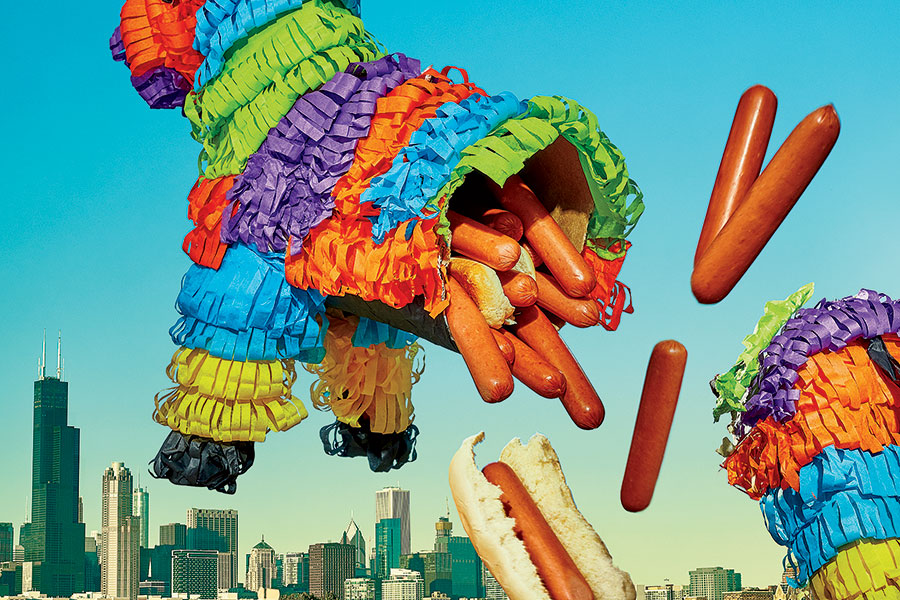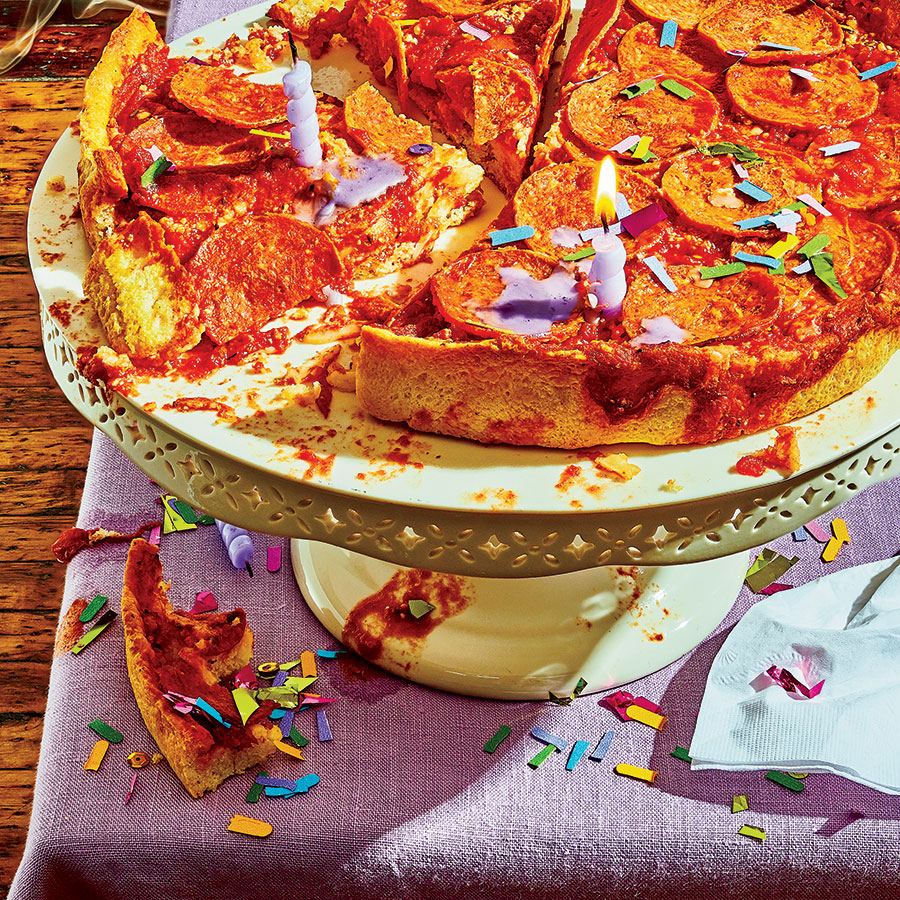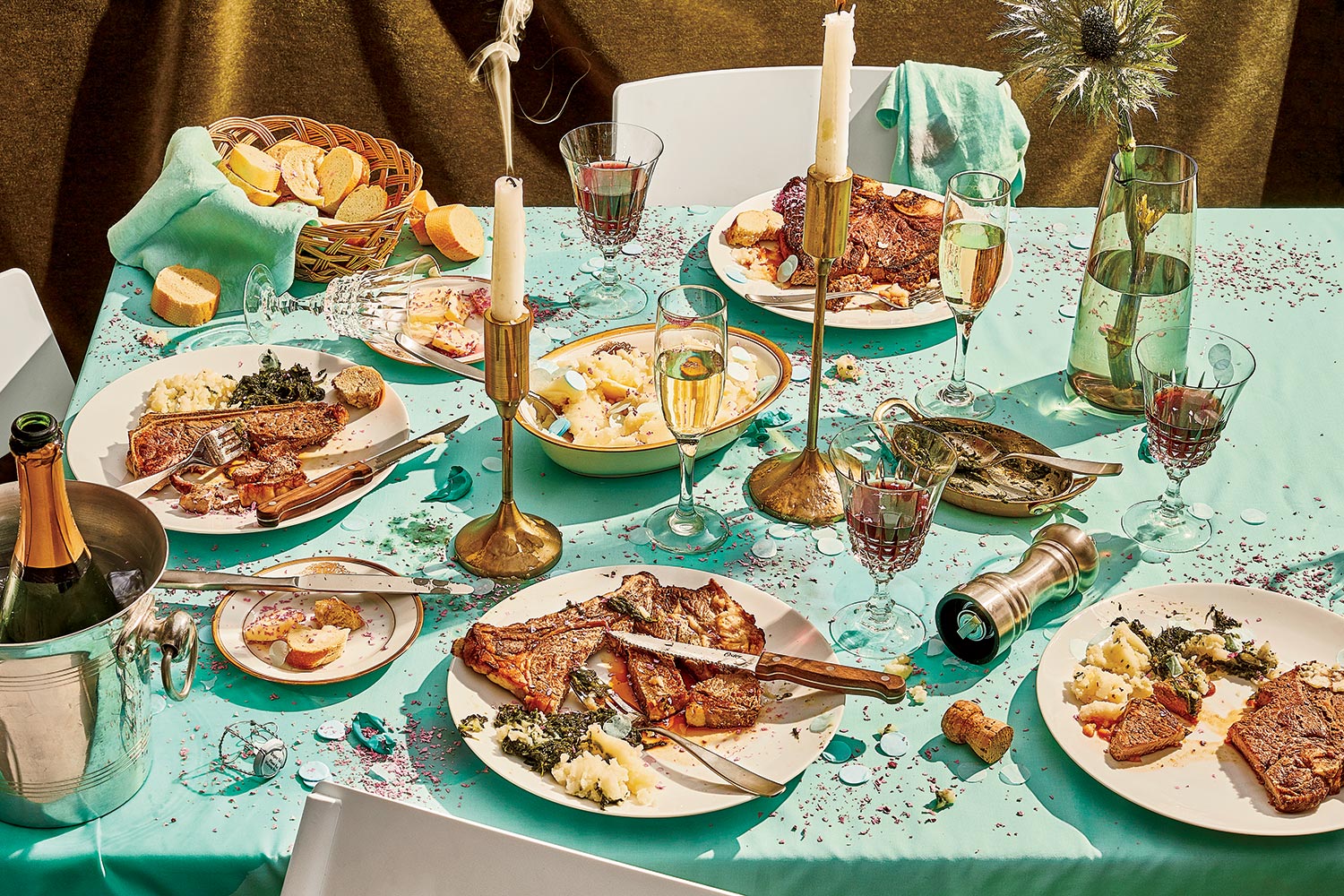On a Sunday evening in early May last year, the night before the James Beard Awards at the Lyric Opera House, the food world descended on Pacific Standard Time in River North for some pregala schmoozing. There was Gabrielle Hamilton of New York City’s Prune at one table and David Kinch of California’s Manresa at another, both Beard-winning chefs. Editors and critics from Bon Appétit, Food & Wine, Saveur, and Eater worked the room. The restaurant generated so much buzz that its chef, Erling Wu-Bower, will surely soon find himself nominated by the James Beard Foundation, which has announced that its awards show will stay in Chicago at least through 2021.
Pacific Standard Time was hardly the only restaurant crawling with VIPs in our big-deal food town that night, and yet for all the culinary energy coursing through Chicago that week, the Beards were a bust for us. Of the 28 local chefs, restaurateurs, and beverage professionals who were semifinalists, just one left a winner: Abe Conlon of Fat Rice, named best chef for the Great Lakes region. It was the worst the city could do, considering that the category is basically a lock for us (not to throw any shade on Cleveland, Indianapolis, or Detroit). It appears that the days of Chicago racking up national Beard awards — prior years have seen the city take home at least three — have come to an end, at least for now.
To make matters worse, the recent closings of Tru, 42 Grams, Grace, and Sixteen have left our Michelin bank account depleted, with the star count dropping from 26 in 2016 to 22 this year. And while stars and shiny medallions don’t tell the full story, their loss does point to a new reality: Chicago’s dining scene has lost its luster.
National critics — who used to write starry-eyed reports from Chicago after meals at cutting-edge restaurants like Alinea and Schwa — have been suggesting as much for a while now. In a 2015 ranking of America’s food cities, the Washington Post’s Tom Sietsema placed Chicago seventh, just behind Philadelphia and Houston. In his annual listing of the country’s best new restaurants for GQ last year, Brett Martin felt the need to vent about a “city I find myself liking less and less to eat in,” asking, “What is the matter with Chicago?” Chandra Ram, the editor of Plate, a trade magazine for chefs published here, piled on: “Chicago was considered the most exciting restaurant city in the country for a few years, then … we just let it go. There is a lot of greatness to Chicago’s restaurant scene, but … we are missing out on the wave of creativity you find in New York, L.A., Portland, Ore., San Francisco, Austin, and other cities.”
Not everyone in town buys this, particularly not Kevin Boehm of the fast-expanding Boka Restaurant Group. About a year ago, I met Boehm at a party, and when he found out I was a food writer who had moved recently from Atlanta, he congratulated me on my good fortune to have landed in Chicago. “Wow, what a nice step up for you,” he enthused. I wish I had come up with a tart rejoinder instead of a forced smile, and so, on my bike ride home, I made a mental list of Atlanta’s advantages. Then I started thinking about other cities I’d eaten in recently and how Chicago stacked up against them. It didn’t take me long to arrive at a dispiriting answer: not so well.
I know what you’re thinking: I’m one of those annoying newcomers who want to bitch about everything Chicago, from the weather to the pizza. Well … yes, I am. But I’m the right kind of annoying newcomer. For starters, I’m not from New York. Also, I’ve spent the better part of 25 years reviewing restaurants. Most important, I really like my adoptive home. And so, in the spirit of tough love, I give you, my fellow Chicagoans, the following five observations.
1 We have not figured out local and seasonal cooking.
Yes, we have our great vegetable chefs, from Boka’s Lee Wolen to Lula Cafe’s Jason Hammel. But by and large, I’ve been dismayed by how little cooks here trust seasonal produce to carry a dish. They don’t go pinwheel-eyed with desire during the brief seasons for local sour cherries and black raspberries. Neighborhood restaurants rarely carry farmers’ market specials, nor do pub menus surprise you with thick slices of heirloom tomato on their burgers or winter chicories in their salads.
Eater’s former national critic (now critic for the Los Angeles Times), Bill Addison, alluded to this problem when he told me, “Chicago chefs at the top end are more invested in ideas than in digging their hands in the soil.” John Shields, the chef and owner of Smyth and the Loyalist and a recipient of two Michelin stars, told me essentially the same thing, admitting that he rarely sees fellow restaurateurs when he makes his rounds at farmers’ market. “There’s not this camaraderie of ‘Holy cow!’ and everyone going gaga over the strawberries,” he says.
Pacific Standard Time, for one, makes a big deal about strawberries from a farmers’ market — the Santa Monica Farmers Market. Last spring, the restaurant had the fruit from Harry’s Berries all over its menu: bursty little specimens grown in Oxnard, California, that are an object of adoration in L.A. But strawberries were in season in Illinois, too. Are there none as good here?
Boka’s Wolen, among others, blames the climate: “The window is so small for growing,” he says. Yet that hasn’t deterred chefs in New England (or Copenhagen, for that matter) from pushing a more seasonal approach. I know the heirloom tomato season here is later than I’m used to, but when gorgeous Cherokee Purples show up in August at the Logan Square Farmers Market, I see none of the collective freak-out that marks such seasons in the South and elsewhere. I’m routinely bummed out by “heirloom tomato” salads I’ve had here in top restaurants, where they’re served refrigerator cold, or prepared with either cherry or MightyVine hothouse tomatoes, or come loaded with so much cheese or pesto that you can’t taste the star ingredient. Also, I’ve never lived in a place that made less of a deal about summer sweet corn than this big city in the middle of the Corn Belt. Don’t get me started on fish.
It’s a tricky problem to fix. While there is no shortage of quality farms supplying Chicago with specialty and organic produce, they’re only working with a small cadre of top chefs who care. Simply put, local farmers need to get their produce into more midrange restaurants if we are to see a blossoming of seasonal cooking. If Rick Bayless can supply his three Tortas Frontera outlets at O’Hare with locally sourced meat and vegetables, others should be able to as well.

2 We need more exciting immigrant cooking — and we need to crow about the good stuff that’s already here.
Sun Belt cities like Atlanta, Houston, and L.A. — with their smoggy highways and endless vistas of squat, ugly strip malls — provide fertile hunting ground for international dining. When I last went back to Atlanta, I happened into a new mall on the city’s favorite international thoroughfare, Buford Highway. It features a taqueria, a Vietnamese tofu deli, a Korean fried chicken joint, a huge and brilliant Malaysian restaurant, and an Asian supermarket with a kick-ass food court, among half a dozen other destinations. I’ve had similar adventures on Bellaire Boulevard in Houston, Valley Boulevard in L.A., and even on Wilson Boulevard in the northern Virginia suburbs of D.C., all reasonable drives from their respective city centers, all packed with eclectic constellations of food choices.
In those places, modest immigrant restaurants aren’t relegated to “cheap eats” discussions, like they are here. The best of them top critics’ lists. Plus, in many American cities, there’s an exciting new wave: second-generation Americans opening up places with cooler designs, better drinks, and ramped-up food that both honors and transcends the cuisines of their families’ homelands. When a new spot for hand-pulled noodles, Shanghai dumplings, Laotian larb, or tandoori chicken opens and gets attention within its own community, the whole town takes notice.
In our beautiful city of neighborhoods, we have our ethnicity-specific enclaves. Not that I haven’t enjoyed exploring Argyle Street, Devon Avenue, and Chinatown, but man, they all feel so tired. Good restaurants in the suburbs, or even those in urban neighborhoods outside the well-known ethnic corridors, don’t attract enough city dwellers to sway the conversation. Sure, the Chicago area abounds with international finds, but they don’t engender that obsessive discourse among the dining public.
And sorry to twist the knife here, but Chicago also needs a major sushi overhaul. It’s all well and good that Kyoten and Omakase Yume have introduced fancy prix fixe menus ($220 and $125, respectively). But we need more chefs below the stratosphere and above the scrum who don’t want to wow us with their hot dishes, truffle oil, and three-bite creations but rather with their fundamentals: fish sourcing, rice preparation, and knife skills.
Another thing (or two, rather): I wish Chicagoans rejected more banh mi sandwiches for not being served on crackly rice-flour-enhanced Vietnamese bread and turned up their noses at Korean barbecues that use gas rather than charcoal.
But take heart, for there are points of light. Bridgeport’s fun-size Sichuan wonder A Place by Damao is one of them. Chinatown’s Xi’an-style spot Shan Shaan Taste is another. And I’m excited about Glenview, where a short stretch of Milwaukee Avenue has attracted a new galaxy of Korean restaurants — Pro Samgyubsal, Paik’s Noodles, So Gong Dong Tofu — specializing in excursion-worthy pork belly barbecue, seafood noodle soup, and soft tofu stew with a kazillion fixings, respectively. More openings appear imminent. Let’s talk them up, people.
3 The West Loop and its corporate overlords need to chill.
Like New York’s meatpacking district, the West Loop made its reputation on sensations — the Publican, Girl & the Goat — that delivered chef-driven food in dramatic spaces with energy and swagger to burn. But alas, it followed the same trajectory and now finds itself stuffed with massive restaurants that need to attract massive crowds to pay their massive rents. “It has begun to feel more like an extended food court than a neighborhood,” GQ’s Martin said in an email.
He noted that so many of the most discussed newcomers here are backed by restaurant groups such as Boka, One Off Hospitality, and Lettuce Entertain You. “That contributes to a sense I get that new restaurants [in Chicago] are first ‘concepts’ and only then maybe labors of love.”
Which brings up a bigger issue: the scourge of restaurant groups. “There’s been a big corporatization of Chicago restaurant culture,” local food writer Michael Nagrant says. “Even people who were truly independent have created companies.” Also, the rising stars of these corporate spots have all left town, he notes, citing Next’s Dave Beran (who moved to L.A.’s Dialogue), as well as Alinea’s Alex Stupak (who went on to start New York’s Empellón) and Jordan Kahn (now at L.A.’s Vespertine).
I came from a city where restaurant groups dominate the high end, and I see the same thing happening here. When these groups comprise two or three restaurants, they’re all about letting chefs, beverage pros, and architects flaunt their distinctive voices. But when there are eight to 10 locations to wrangle, all the menus start to develop the same base personality (thanks to bulk purchasing), and signature dishes migrate from one kitchen to the next (that’s why, for instance, Bellemore’s opening menu offered a variation on Boka’s aged duck with burnt honey glaze).
When competitors fail in a prime location, these groups swoop in, spend a ton on a new build-out, and hire a chef with name recognition. They glam the place up for the opening, giving the city a contact high. Then the hottest new restaurant of the season settles into being completely average. (Case in point: Formento’s, which opened three years ago with the promise of reviving the glamorous Italian dinner house genre but has become just another fine, faceless West Loop spot.) Chicago still gives birth to small, idiosyncratic places such as Kitsune and Mi Tocaya Antojeria, but they’re not pushing the dialogue like they once did. Instead, we just keep having the same conversation. Maybe instead of checking out every overhyped new West Loop restaurant, locals could give idiosyncratic but uneven spots a second chance. (Note to self: Try Twain again.)

4 Our street food culture is stuck in the past.
We’ve got so many great stories behind the classic sandwich shops, lunch counters, and hot dog stands that made this town, and yet I have nothing but questions. Let me ask politely: Do most people really love jibaritos or gym shoe sandwiches? Is there any truly great Italian beef out there? (A wise chowhound Chicagoan once told me the best one I’d ever find would merit a B+.) Where are the inventive modern street food stalls? Will the City Council ever get over its boneheaded restrictions on food trucks? Is there nothing but tacos on the horizon? Where are the developing flavors of 21st-century Chicago?
Let’s expand “street food” to mean citywide-obsession food. Once upon a time, Hot Doug’s filled that role. What else? Maybe Pequod’s (though I’d argue for the cheesy-crust Logan Squares at Paulie Gee’s instead) or the Au Cheval burger, a lovely, greasy nightcap to a drunken evening and one of the country’s great double stacks. I understand some folks obsess over those fancy tenders at Honey Butter Fried Chicken, but I don’t see it. I kind of get Crisp, but there is Korean fried chicken in other cities that so captivates diners they refer to it as “KFC,” in a supreme act of cultural reappropriation.
So I’ll pose another question: Where is the great dish that you’ll spend hours in line for because you know you’ll make an O-face as soon as you chomp down? Where’s the local answer to L.A.’s Howlin’ Ray’s, Austin’s Franklin Barbecue, or Brooklyn’s Di Fara Pizza? Fanaticism creates obsessives, and obsessives create a culture around a particular food.
It’s time for a new cult classic. I, for one, would love to find an Italian beef sandwich as craveable as the hoagies and roast pork sandwiches my soul requires when I go to visit my sister in Philadelphia. Or, say, a hot dog stand that does its shopping at Paulina Meat Market instead of the Vienna Beef factory.
5 You have to be on Team Chicago, no questions asked.
Let me be clear about something: The dining culture in Chicago is way more robust, energetic, and flat-out delightful than the one I came from. But there’s a fundamental difference that mystifies me. In Atlanta, a distinctive new restaurant often has a hard time getting off the ground because diners are too quick to rip into its flaws. Here, it’s the opposite. Chicagoans, critics included, too often turn off their bullshit detectors and cheer on the pretty good.
I think about those four red stars emblazoned on everything from handbags to forearms. If I walked down Peachtree Road in a T-shirt with Atlanta’s phoenix-rising-from-the-flames logo, people would wonder what I had against birds. I love that everyone wants to join the team here, but as far as I can tell, the only requirement seems to be a Cubs jersey and a ritual initiation shot of Malört. I admit it’s hard not to appreciate the pride and the bluster. This city is bluster. But it keeps Chicago from reaching its potential.
Nearly since the opening of Charlie Trotter’s in 1987, Chicagoans have touted their city’s “world-class restaurants.” Certainly, alums from the Trotter kitchen — Matthias Merges, Graham Elliot, Curtis Duffy, Beverly Kim — have become important local chefs in their own right and crafted a new Chicago style consisting of equal parts cutting precision and fresh thinking. This is to say nothing of two other Trotter alums, Grant Achatz and Homaro Cantu, who made Chicago a locus for modernist cooking that rivals Barcelona.
And yet in 2018 Alinea ranked 34th on the vaunted World’s 50 Best Restaurants list, roughly where it debuted in 2007 as a two-year-old sensation. It peaked at No. 6 in 2011 and stayed there for two years before falling steadily. I don’t totally trust these exercises in list making or the people behind them — when I was in Atlanta, the U.K.-based publisher of this very list asked me to judge restaurants in the Republic of Georgia — but the declining ranking suggests a broader problem: that modernist cooking techniques may no longer drive the conversation. We haven’t quite picked up something else to talk about yet, so when we talk about Chicago’s transformative restaurant culture, we are talking about its recent past. Of course, to love a difficult place, you often mythologize it.
I’m glad to call Chicago home, even though I curse Yahweh whenever I break out my Canada Goose parka for the season. Still, I can’t help but get the feeling that all of us who care about good food in this town — chefs and diners alike — are hibernating. People, it’s time to come out of our lairs, with a voracious appetite, and step into the light.



